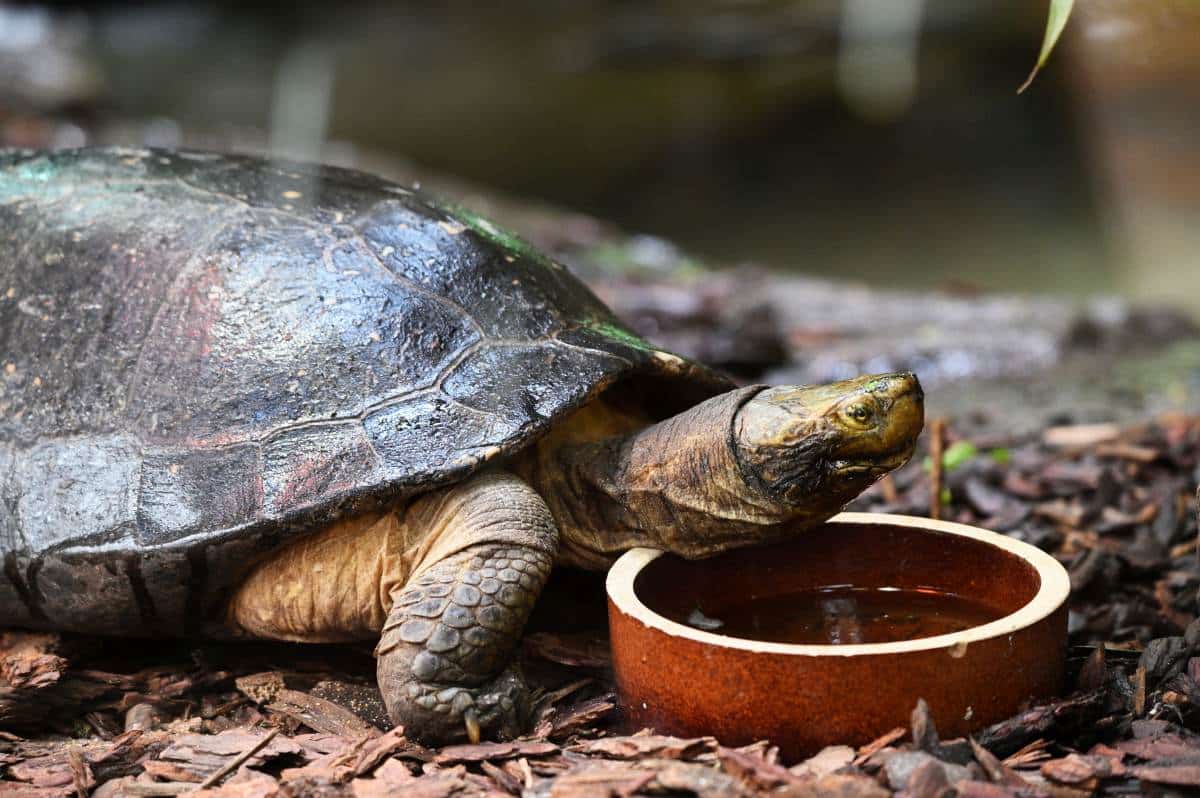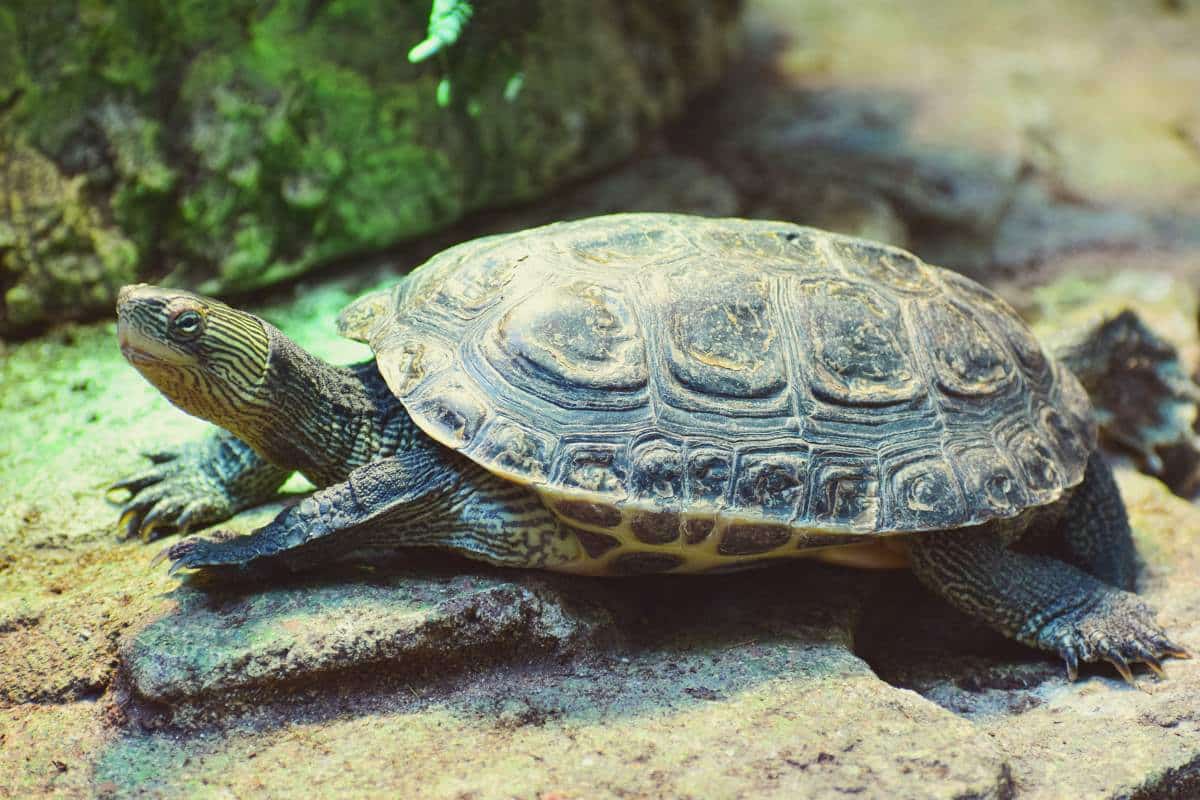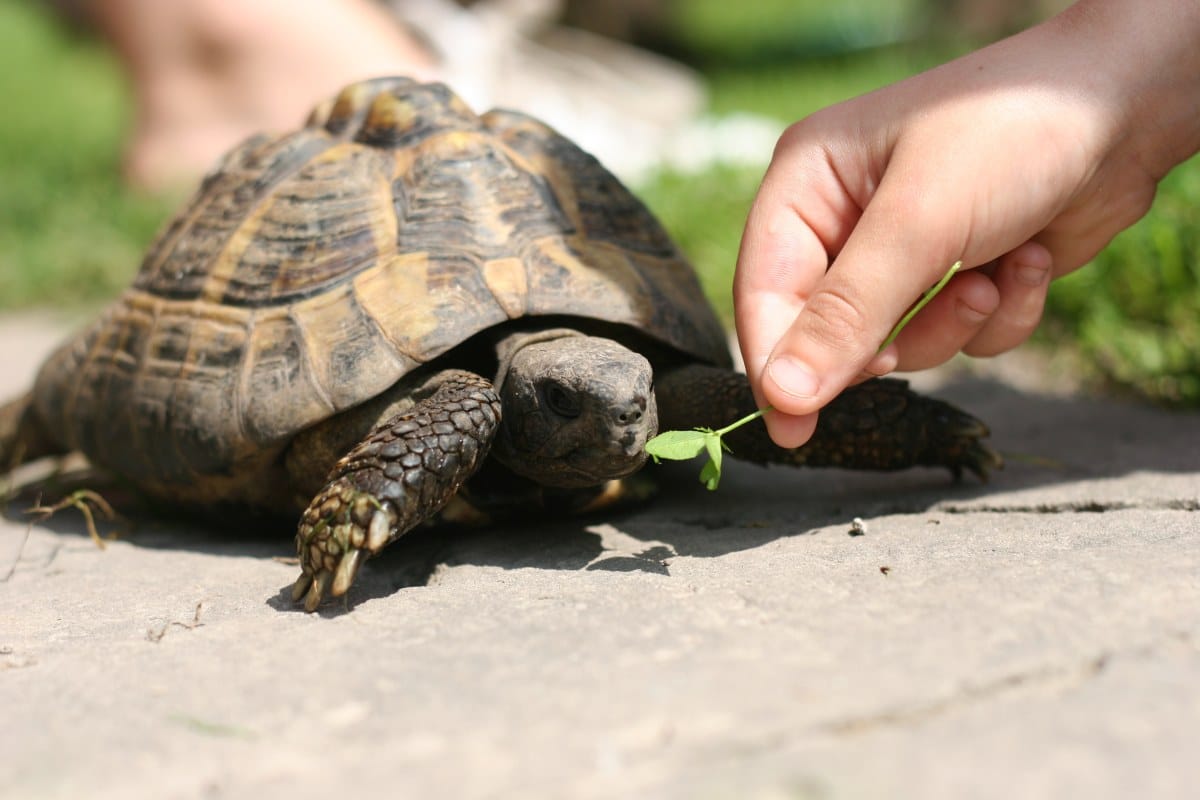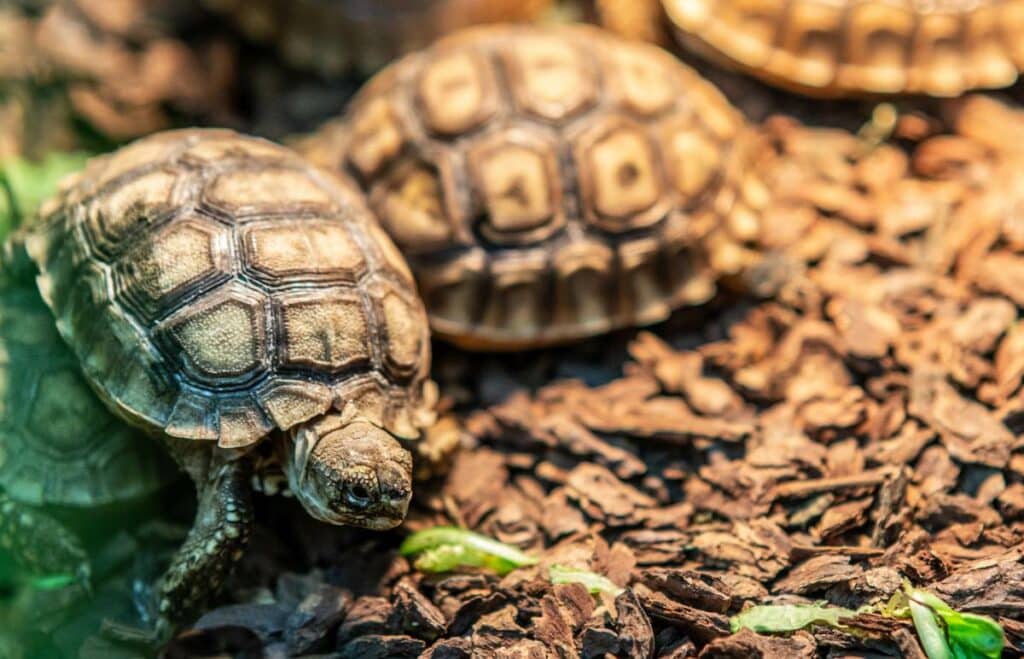the essentials in brief
Water turtles usually cost between 30 and 120 euros, while tortoises cost between 80 and 120 euros. But there are also very rare or old species that can cost several hundred or thousands of euros.
Tortoises are a little easier to keep than sea turtles, as they require less space and equipment. The Greek tortoise and the spur tortoise are suitable for beginners. More here...
Some tortoise species are native to tropical or subtropical areas and do not need to hibernate. These are, for example, the red-bellied short-necked turtle or the yellow-headed pond turtle. More facts here...
Are you thinking about buying a turtle? Your interest is justified: Turtles are fascinating animals that have lived on earth for millions of years. They belong to the reptilian family and have a tough shell that protects them from predators.
There are many different species of turtles that vary in size, appearance, habitat and needs. In this blog article we would like to give you some important information that you should consider if you want to buy a turtle.
Which turtle is right for me?

Before you decide on a tortoise, you should consider which species suits you best. There are big differences between the different types of turtles, which differ in size, appearance, habitat and requirements. In general, two large groups of tortoises can be distinguished: tortoises and sea turtles.
Tortoises are predominantly herbivorous animals that live in warm and dry areas. you need one large outdoor enclosure with a heated shelterwhere they can retreat.
Tortoises keep one too annual hibernation, which must be made possible for them. The most popular tortoise species include the Greek tortoise, the spur tortoise and the margined tortoise.
Turtles are mostly carnivore or omnivorethat live in or near the water. They need a large aquarium with a piece of land for them to bask on.
Turtles don't hibernate, they do are active all year round. Popular species include the red-eared slider, yellow-eared slider and musk turtle.
You should therefore think carefully about which turtle species suits your lifestyle and the space you have. In addition, you should inform yourself about the inform special needs of any kindbefore you decide on a turtle.
The different types at a glance
Here is a summary of the most important information and needs for the common turtle species:
Greek tortoise (Testudo graeca)
- Small to medium-sized tortoise with a high convex carapace and horn cones on the hind legs
- Requires a large outdoor enclosure with shelter and hibernates annually
- Eat mainly plant-based food such as wild herbs, leaves, flowers and fruit
- Subject to species protection and requires a CITES certificate
Moorish tortoise (Testudo graeca graeca)
- Subspecies of the Greek tortoise with dark coloring and light spots on the top of the head.
- Found in North Africa and southern Spain and needs a warm and dry climate
- Feeds similarly to the Greek tortoise, but also eats animal food such as snails or worms
- Very Rare and Endangered, Permission to Keep
Greek tortoise (Testudo marginata)
- Medium to large tortoise with a wide rim at the rear end of the carapace and a long tail.
- Occurs in southern Europe and requires a sunny and humid climate
- Feed mainly on plant-based food such as wild herbs, leaves, flowers and fruits, but also on animal food such as snails and worms
- Are relatively robust and adaptable and require a CITES certificate
Eared Turtle (Chrysemys picta)
- Small to medium-sized sea turtles with colored shells and stripes on the head and legs
- Needs a large aquarium with land part, filter, heater and UV lamp
- Feed mainly on animal food such as fish, meat, insects and worms, but also on plant food such as aquatic plants or lettuce
- Are very active and inquisitive and need a lot of activity
Yellow-eared Slider (Trachemys scripta scripta)
- Subspecies of the slider turtle with yellow cheek stripes and green carapace.
- Occurs in North America and requires a warm and humid climate
- Feeds similarly to the eared turtle, but will also eat slightly more plant-based foods such as aquatic plants or lettuce
- Very common commercially but also very invasive and crowd out native species
Musk Turtle (Sternotherus odoratus)
- Small sea turtle with a dark shell and a long neck
- Requires a small to medium sized aquarium with a land section, filter, heater and UV lamp
- Eats mainly animal food such as fish, meat, insects and worms - but will also eat some plant food such as aquatic plants or lettuce
- are very shy and often hide under water or in the mud
Note: When you buy a turtle, you should always make sure it is the right size. A tortoise that is too small or too large can be a sign of poor housing or poor nutrition. A healthy turtle should be about the same size as its shell length.
Where can I buy turtles?

Once you have decided on a turtle, the question arises as to where you can buy it. There are different ways to buy a turtle, each with advantages and disadvantages.
One option is a turtle to buy at a pet store. There you usually have a large selection of different types and sizes. However, you should make sure that the turtles are kept in a species-appropriate manner and look healthy. In addition, you should not only rely on the advice of the seller, but inform yourself well.
Another option is a turtle to buy from a breeder or hobbyist. Here you often have the advantage that the turtles come from free-range husbandry and are already adapted to the climate. In addition, you can often look at the parents and learn more about the origin and keeping of the turtles. But here, too, you should make sure that the turtles are healthy and that the breeder or hobbyist is reputable.
A third option is a turtle to adopt from an animal shelter or sanctuary. You have the advantage that you are giving an animal in need a new home and the staff often know a lot about the history and character of the turtle. However, you should also make sure that the turtle is healthy and suits you.
No matter where you buy a turtle, always insist that you get one valid CITES certificate. This is a document that proves the turtle was legally traded and not from the wild. Without this certificate you are not allowed to keep or resell a turtle.
Note: If you want to import a turtle from abroad, you have to comply with the legal regulations. This includes that you need an import permit and a CITES certificate. You also have to register the turtle with the responsible authority and possibly comply with a quarantine.
What do I need for a turtle?
Once you've bought a turtle, you need to take care of its housing and care. Depending on whether you have a tortoise or a sea turtle, you need different things.
For a tortoise is a large outdoor enclosure of at least 10 m² per animal necessary. The enclosure should be varied, with different plants, stones, roots and hiding places.
Also, you need one Shelter with heater and thermometer. The tortoise can stay there in bad weather or during the hibernation. The enclosure should also be protected from predators and escapes.
For a sea turtle you need a large aquarium containing at least 100 liters per animal takes. The aquarium should be equipped with a filter, heater and thermometer.
Besides that you need a piece of land, on which the turtle can sunbathe. A UV lamp, which promotes the formation of vitamin D3, is suitable for this. The aquarium should also be equipped with various plants, stones, roots and hiding places.
You also need the right food for both types of turtles. Tortoises feed mainly on plant-based food such as Wild herbs, leaves, flowers and fruits.
Aquatic turtles mainly eat animal food such as Fish, meat, insects and worms. Both species should be fed regularly with a mineral and vitamin supplement.
How do I care for my turtle?

If you have a turtle, you must take care of it. This means not only feeding them and changing the water, but also taking care of their health and well-being.
You should see your turtle examine regularlyto determine if she has any injuries or signs of illness. These include, for example, loss of appetite, apathy, nasal or eye discharge, diarrhea or problems with the shell. If you notice anything unusual, you should consult a veterinarian who is knowledgeable about reptiles.
You should also weigh and measure your turtle regularly to monitor its growth. One healthy turtle grows slowly and evenly. If she's growing too fast or too slow, or if she's losing weight, it can indicate a poor diet or an illness.
Healthy Appearance: You can also recognize a healthy turtle by the fact that it has clear eyes, firm skin and a smooth shell. She should also be lively and curious and eat well.
You should also treat your turtle and her with respect provide enough rest and retreat. A turtle is not a toy or cuddly toy, but an independent creature with its own character.
She doesn't like being picked up or petted all the time. she is also not dependent on the company of other animals or humans. A turtle is happiest when it can live in its natural environment.
Spending good times with a turtle
A turtle is a special animal that can bring you a lot of joy. But she is one too big responsibility that costs a lot of time and money. If you want to buy a turtle, you should be well informed and prepared.
You should consider what species suits you, where to buy them, what you need for them, and how to care for them. This is the only way you can be sure that your tortoise will lead a long and healthy life.
Sources
- https://www.swrfernsehen.de/kaffee-oder-tee/ratgeber/schildkroete-120.html
- https://www.apotheken-umschau.de/familie/freizeit-alltag/schrildkroete-haustier-richtige-haltung-938805.html
- https://www.familie.de/familienleben/we-are-familiy/haustiere/schildkroete-als-haustier-ist-das-gepanzerte-tier-fuer-kinder-geeignet/


